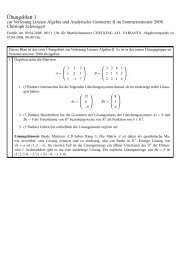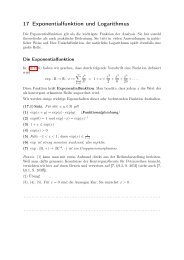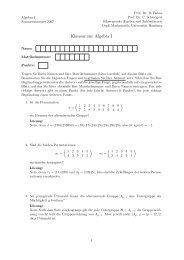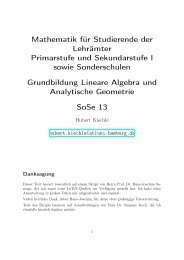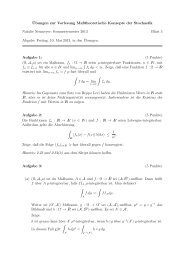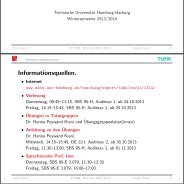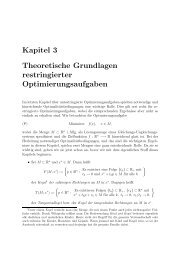pdf file
pdf file
pdf file
You also want an ePaper? Increase the reach of your titles
YUMPU automatically turns print PDFs into web optimized ePapers that Google loves.
Proposition 5.1.5.<br />
Let H is a finite-dimensional Hopf algebra.<br />
1. If ω ∈ G(H) is a pivot for H, then the action with ω endows the category H−mod fd of<br />
finite-dimensional H-modules with a pivotal structure.<br />
2. Conversely, if ω is a pivotal structure on the category H−mod fd , then ω := ω H (1 H ) is a<br />
pivot for the Hopf algebra H.<br />
Proof.<br />
1. Assume that ω is a pivot. We already know that the category H−mod fd is rigid. The<br />
bidual of the H-module (V, ρ V ) is the H-module (V, ρ V ◦ S 2 ). Use the pivot ω to define<br />
the linear isomorphism<br />
ω V : V → V<br />
v ↦→ ω.v .<br />
This is actually a morphism V → V ∨∨ of H-modules:<br />
a.ω V (v) = S 2 (a) ∙ ω.v = ω ∙ a ∙ ω −1 ω.v = ω ∙ a.v = ω V (a.v) .<br />
2. Suppose that H−mod fd is a pivotal category. We canonically identify H ∼ = H ∗∗ as a<br />
K-vector space, on which h ∈ H acts by S 2 (h). We consider the endomorphism<br />
All right translations by a ∈ A<br />
ω H : H → H ∗∗ ∼ = H .<br />
R a : H → H<br />
h ↦→ h ∙ a<br />
are H-linear. The naturality of ω thus implies ω(h ∙ a) = ω H (h) ∙ a for all h, a ∈ H. Since<br />
ω H is a morphism of H-modules, we have<br />
Altogether, we find<br />
ω H (a ∙ b) = S 2 (a)ω H (b) .<br />
S 2 (a)ω H (1) = ω H (a ∙ 1) = ω H (1 ∙ a) = ω H (1) ∙ a<br />
which shows that ω H (1) is a pivot for the Hopf algebra H.<br />
To understand the meaning of the notion of a spherical Hopf algebra, we need the notion<br />
of a trace which is also central for applications to topological field theory.<br />
Lemma 5.1.6.<br />
In any monoidal category, the monoid End (I) is commutative.<br />
✷<br />
118






